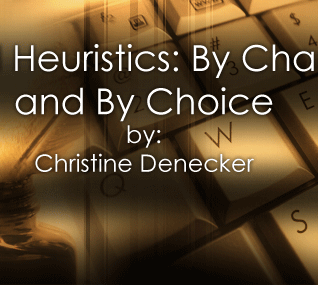


"The multimodal project made what I felt throughout writing my essay come to life." Perhaps student motivation could also be traced to Elizabeth Daley’s (2003) notion that “The multimedia language of the screen has become the current vernacular” (p.34), and therefore, students simply felt more comfortable with the “language of technology” when it came to composing. Takayoshi and Selfe (2007) demonstrate a similar view when they state:
Thus, the digital heuristic afforded students a sense of command and empowerment, since they were working in a mode with which they had daily experience. Evidence to this point was found in the students’ written reflections following the incorporation of the heuristic. As one student in my class explained, “I think it’s much harder to convey a strong message in traditional literacy because to describe something effectively can be hard. In multimedia this can be easier with the help of pictures and sounds.” Another agreed, noting “I believe the strength of multimedia is its ability to convey its idea more easily [than traditional forms] . . .” These comments do suggest a certain ease students have with digital media; however, in the student reflections these responses were also coupled (generally) with comments regarding the creative or “inventive” nature of both traditional and digital mediums. As such, the comments suggest a particular mindset among students that digital media may afford more initial opportunities for creativity and expression than its traditional counterparts. For example, one student claimed that: “Multimedia literacy is more free-form and artistic; you can be literate in multimedia and still be fresh and new and groundbreaking.” Similarly, another student in my colleague's class claimed he found “composing a multimedia document” a “more creative process.” Still another heralded the digital form over the traditional since it “lets the author draw from many more components than text alone.” While not specifically tied to invention, these comments of “creative”, “fresh” and “groundbreaking” taken together suggest an interpretation of a digital approach to initial writing as the “opening of a door”—a door that previously may have remained stubbornly shut for some students. "The project was effective at getting me to clearly 'show' and not just 'tell'." Just as invention was difficult to measure in this study beyond anecdotal and reflective means, so, too, were gains in students’ skills regarding focus, organization, and audience awareness. In the case of my first set of students (Heuristic “By Chance”), the positive strides seen in their papers following the digital heuristic exercise could be attributed to any number of factors including the heuristic, itself, to the fact that the traditional paper in question was written at the end of the semester when (any instructor would hope) students had begun to master certain rhetorical skills. However, when students in my subsequent courses (see Heuristic “By Choice”) were asked to reflect upon the role of the heuristic in aiding the organization and development of their traditional essays, they suggested a positive correlation: “I thought the concept of the project was a good idea,” said one student, “personally, it really helped me find a clear thesis to my paper that I couldn’t pinpoint before.” Another student reflected,
My colleague, too, witnessed gains in her students’ ability to focus their traditional essays thanks to the digital heuristic. She writes, “Many of my students were struggling with the idea of thesis . . . . Working on the movie project really clarified that for many of them.”
|
||